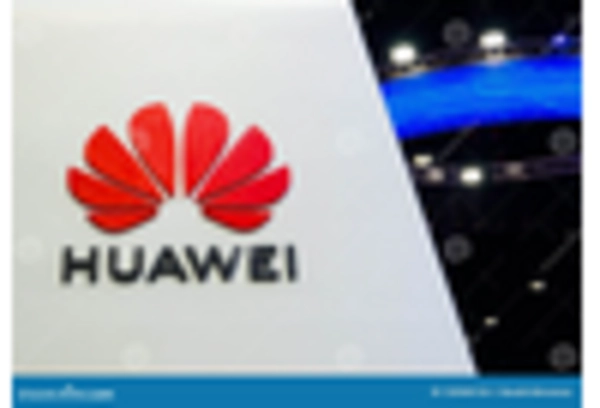Rising Adoption of 5G Technology
The rollout of 5G technology in the US is a significant catalyst for the virtualized evolved-packet-core market. As telecom operators prepare for the deployment of 5G networks, the need for a flexible and scalable core network becomes paramount. Virtualized evolved-packet-core solutions are well-suited to support the high data rates and low latency requirements of 5G applications. Industry analysts predict that the 5G market will reach a valuation of over $300 billion by 2025, driving substantial investments in virtualized core technologies. This trend indicates a robust growth trajectory for the virtualized evolved-packet-core market as operators seek to leverage the benefits of 5G.
Increased Focus on Network Resilience
The emphasis on network resilience is becoming increasingly pronounced in the US, serving as a key driver for the virtualized evolved-packet-core market. As cyber threats and network disruptions become more prevalent, service providers are prioritizing the development of resilient network architectures. Virtualized solutions offer enhanced redundancy and failover capabilities, which are essential for maintaining service continuity. The market is witnessing a shift towards architectures that can withstand various challenges, including cyberattacks and natural disasters. This focus on resilience not only enhances customer trust but also positions the virtualized evolved-packet-core market as a critical component in the broader telecommunications ecosystem.
Growing Demand for High-Speed Connectivity
The increasing demand for high-speed connectivity in the US is a primary driver for the virtualized evolved-packet-core market. As consumers and businesses alike seek faster internet services, telecom operators are compelled to upgrade their infrastructure. This shift towards high-speed networks is expected to propel the market, with projections indicating a growth rate of approximately 15% annually. The need for enhanced data transmission capabilities, particularly with the rise of IoT devices and smart technologies, further emphasizes the importance of a robust virtualized evolved-packet-core market. Consequently, service providers are investing heavily in virtualized solutions to meet these demands, ensuring they remain competitive in a rapidly evolving digital landscape.
Cost Efficiency and Operational Flexibility
Cost efficiency remains a crucial factor driving the virtualized evolved-packet-core market. By adopting virtualized solutions, telecom operators can significantly reduce operational costs associated with traditional hardware. The transition to software-based architectures allows for more agile and flexible network management, enabling providers to scale services according to demand. Reports suggest that companies can achieve up to 30% savings in operational expenditures by implementing virtualized systems. This financial incentive, combined with the ability to quickly adapt to changing market conditions, positions the virtualized evolved-packet-core market as an attractive option for service providers aiming to optimize their resources and enhance service delivery.
Regulatory Support for Network Modernization
Regulatory frameworks in the US are increasingly supportive of network modernization initiatives, which is a vital driver for the virtualized evolved-packet-core market. Government policies aimed at promoting advanced telecommunications infrastructure encourage investments in virtualized technologies. The Federal Communications Commission (FCC) has introduced various programs to facilitate the transition to next-generation networks, which includes the adoption of virtualized solutions. This regulatory backing not only fosters innovation but also ensures that service providers can meet compliance requirements while enhancing their network capabilities. As a result, the virtualized evolved-packet-core market is likely to benefit from this conducive regulatory environment.

















Leave a Comment